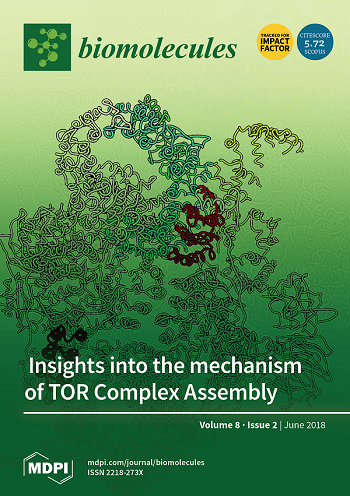Chitosan-Modified AgNPs Efficiently Inhibit Swine Coronavirus-Induced Host Cell Infections via Targeting the Spike Protein
IF 4.8
2区 生物学
Q1 BIOCHEMISTRY & MOLECULAR BIOLOGY
引用次数: 0
Abstract
The COVID-19 pandemic, caused by severe acute respiratory syndrome coronavirus 2 (SARS-CoV-2), has filled a gap in our knowledge regarding the prevention of CoVs. Swine coronavirus (CoV) is a significant pathogen that causes huge economic losses to the global swine industry. Until now, anti-CoV prevention and control have been challenging due to the rapidly generated variants. Silver nanoparticles (AgNPs) with excellent antimicrobial activity have attracted great interest for biosafety prevention and control applications. In this study, we synthesized chitosan-modified AgNPs (Chi-AgNPs) with good biocompatibility to investigate their antiviral effects on swine CoVs. In vitro assays showed that Chi-AgNPs could significantly impaired viral entry. The direct interaction between Chi-AgNPs and CoVs can destroy the viral surface spike (S) protein secondary structure associated with viral membrane fusion, which is caused by the cleavage of disulfide bonds in the S protein. Moreover, the mechanism showed that Chi-AgNPs reduced the virus-induced apoptosis of Vero cells via the ROS/p53 signaling activation pathway. Our data suggest that Chi-AgNPs can serve as a preventive strategy for CoVs infection and provide a molecular basis for the viricidal effect of Chi-AgNPs on CoVs.壳聚糖修饰的 AgNPs 通过靶向尖峰蛋白有效抑制猪冠状病毒诱导的宿主细胞感染
由严重急性呼吸系统综合征冠状病毒 2(SARS-CoV-2)引起的 COVID-19 大流行填补了我们在预防 CoV 方面的知识空白。猪冠状病毒(CoV)是一种对全球养猪业造成巨大经济损失的重要病原体。到目前为止,由于CoV变种的快速产生,抗CoV的预防和控制一直面临挑战。具有优异抗菌活性的银纳米粒子(AgNPs)在生物安全防控方面的应用引起了人们的极大兴趣。在本研究中,我们合成了具有良好生物相容性的壳聚糖修饰银纳米粒子(Chi-AgNPs),以研究其对猪 CoVs 的抗病毒作用。体外实验结果表明,Chi-AgNPs 能显著抑制病毒的进入。Chi-AgNPs 与 CoVs 之间的直接相互作用可破坏与病毒膜融合相关的病毒表面尖峰(S)蛋白二级结构,这种作用是由 S 蛋白中二硫键的裂解引起的。此外,研究机制还表明,Chi-AgNPs 可通过 ROS/p53 信号激活途径减少病毒诱导的 Vero 细胞凋亡。我们的数据表明,Chi-AgNPs 可作为一种预防 CoVs 感染的策略,并为 Chi-AgNPs 对 CoVs 的杀毒作用提供了分子基础。
本文章由计算机程序翻译,如有差异,请以英文原文为准。
求助全文
约1分钟内获得全文
求助全文
来源期刊

Biomolecules
Biochemistry, Genetics and Molecular Biology-Molecular Biology
CiteScore
9.40
自引率
3.60%
发文量
1640
审稿时长
18.28 days
期刊介绍:
Biomolecules (ISSN 2218-273X) is an international, peer-reviewed open access journal focusing on biogenic substances and their biological functions, structures, interactions with other molecules, and their microenvironment as well as biological systems. Biomolecules publishes reviews, regular research papers and short communications. Our aim is to encourage scientists to publish their experimental and theoretical results in as much detail as possible. There is no restriction on the length of the papers. The full experimental details must be provided so that the results can be reproduced.
 求助内容:
求助内容: 应助结果提醒方式:
应助结果提醒方式:


